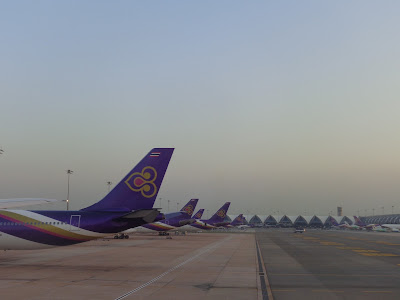I am posting in my blog with the writer's consent selected ethnography penned creatively by my students to contribute to the emerging sub-discipline of anthropology called 'Virtual Ethnography'.
Basically, virtual ethnography is also referred to as Webnography. We cannot deny the fact that with increasing use of technology and the Internet, there is now a demand for online spaces on various ethnographic accounts.
By Michelle C Robles
Growing up, I’ve had my fair sampling of museums both local and abroad. As a kid, I’ve gone to several trips to our country’s local museums such as the National Museum and Museo Pambata, which I only vaguely recall. Abroad, I’ve roamed the halls of the American Museum of Natural History in New York, the Getty Museum in California and The Louvre in Paris.
Of all these great places I went to, I
noticed that there was a commonality in my experiences. I was merely an
observer, looking at artifacts, paintings, sculptures in awe of their beauty
but never really understanding what they meant. I never felt their significance
to me. This thing that those experiences lacked was an experience made possible
by the last museum I went to – the Mind Museum.
The exhibit took me on a journey
through the Atom, Life, the Earth and the Universe. This time, I wasn’t merely
an observer but a participant. The things that were just pure head knowledge to
me about this world came to life during those three hours I spent in this
Museum last April 29. Each part of the exhibit was an interactive display that
helped me understand the scientific laws and principles that governed the world
we live in. I was amazed with the simplicity with which they were presented. It
catered to the young crowd and at the same time, it appealed to the older
generation as it presented complex science concepts through hands-on
activities.
At the beginning of the tour, we were welcomed by Aedi, which was a modern robot. And from there we were ushered into a theater that showed a 3D movie that showcased the evolution of man from a primitive hunter-gatherer to a sophisticated and intelligent animal. From the discovery of fire, the earliest humans then evolved from the use of basic tools to cave drawings, which also transitioned to rituals, and so on.
This gave
everyone a foundation of what humans were, where we came from and where we are
now as a species. As we exited the theater, it was as if everything in the museum
made sense because it was a segue from the movie that ended with how man
evolved to its present state. When we saw the exhibits that were before us, we
were looking at the byproducts of technological innovation and natural
evolution. From the strange world of the very small (atom), to nature across the breadth of time (earth) to the exuberance of life
to the majesty of the universe, I
saw how everything was connected.
As I shifted to the last part of the
exhibit, it showcased seemingly ordinary things that, in reality, were
extraordinary inventions such as the evolution of transportation, the printing
press, the manipulation of light for human use, the birth of different languages
and of literature. It also included technologies related to food, clothing,
shelter and health – basically of how we live. These various technologies that
showcased human ingenuity sets apart the human race from other species of
intelligent life here on earth. It delved into who we are as human beings –
expressions of our humanity.



























